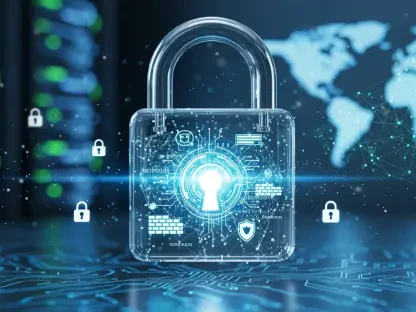In today’s digital age, cybersecurity has become an essential concern for businesses and consumers alike. Rupert Marais, a seasoned expert in cybersecurity, lends his insights into the increasing wave of cyberattacks impacting major retailers worldwide. From understanding how these attacks unfold to safeguarding against them, Rupert offers a deep dive into this pressing issue.
Can you explain how recent cyberattacks have impacted major retailers and their customers?
The recent spate of cyberattacks has had a significant ripple effect on both retailers and their customers. These attacks often disrupt the retailers’ ability to fulfill orders, directly affecting inventory and resulting in empty shelves. For consumers, it means a lack of access to goods they regularly rely on, causing frustration and inconvenience. Retailers also face considerable challenges in maintaining customer trust during such crises, as their personal information may be compromised in these breaches.
What is the significance of United Natural Foods’ system breach, and how has it affected grocery stores like Whole Foods?
The breach at United Natural Foods highlights the vulnerability of supply chains to cyber threats. Serving as a major distributor, any disruption in their systems quickly cascades down to stores like Whole Foods. In this case, it hampered the delivery of goods and left certain items unavailable on shelves. It underscores the delicate balance that exists in supply chains and the broad impact a single breach can have.
How long were consumers in the U.K. unable to order from Marks & Spencer, and what were the effects on in-store shopping?
Consumers in the U.K. were unable to order online from Marks & Spencer for more than six weeks following the attack. This disruption led to reduced availability of products in both online and physical stores. Shoppers found fewer options when visiting stores, highlighting how cyberattacks can cripple operations and diminish a brand’s ability to meet consumer demand.
Why are cyberattacks on consumer-facing businesses particularly concerning?
Cyberattacks on consumer-facing businesses are dire because they directly affect consumer trust and safety. These businesses often hold vast amounts of customer data, which, if breached, can lead to identity theft and financial fraud. Moreover, these attacks can halt business operations and cause significant financial dents. The pressure of restoring operations swiftly while managing public relations can strain any organization.
How do data breaches potentially lead to phishing or fraud attempts?
When a breach occurs, cybercriminals typically acquire sensitive data such as email addresses and passwords. This information enables them to craft tailored phishing schemes that can deceive consumers into revealing even more personal information or financial details. It sets off a chain reaction where the initial data breach leads to subsequent fraud attempts, amplifying the damage done.
What trends have experts observed regarding cyberattacks in the retail sector?
Experts have noted a distinct uptick in attacks targeting the retail sector. These attacks have evolved in sophistication, with a marked increase in ransomware incidents. Cybercriminals are emboldened by the potential for monetary gain, realizing that disrupting a well-known retail brand can yield significant leverage. As retailers depend heavily on consumer trust and smooth operations, the stakes are incredibly high.
Why do ransomware attacks account for a growing share of cybercrimes, and how do they specifically pressure retail businesses?
Ransomware attacks are prevalent because they are profitable for attackers. They work by holding a business’s vital systems hostage until a ransom is paid. For retail businesses, the pressure is heightened as operational downtime can translate into considerable financial loss and irreversible damage to customer relationships. Retailers are often at the forefront of these attacks due to their significant reliance on digital infrastructure for operations and sales.
Can you elaborate on how cyberattacks have affected food supply chains, particularly in the U.K.?
Cyberattacks on food supply chains have led to significant disruptions, particularly in rural U.K. areas where supplies were already limited. The attacks on major chains like Co-op created shortages, forcing consumers to go without basic necessities. It showcased the fragility of these supply systems and the real-world implications of digital security failures.
How does a cyber breach put customers’ personal data at risk, and what specific data is vulnerable?
During a cyber breach, unauthorized individuals can access valuable customer data, ranging from names and contact details to credit card information. This data is often a gateway for more extensive fraud or identity theft. Once in the wrong hands, it can be misused in various fraudulent schemes targeting consumers directly.
What steps should consumers take to protect themselves after a retailer cyberattack?
Consumers should remain vigilant for any suspicious communication following a cyberattack. It’s important not to click on unverified links or provide personal information without first verifying the source. Regularly updating passwords, using multifactor authentication, and monitoring their credit report for unusual activity can also fortify their defenses against potential misuse of their data.
Why is it important not to reuse passwords across multiple websites, and what is “credential stuffing”?
Reusing passwords is a common security pitfall. If one site is breached, all accounts using the same password can be compromised through a technique called “credential stuffing.” This method involves using stolen credentials to gain unauthorized access to accounts on various platforms. Unique passwords are crucial to mitigate this risk.
How can multifactor authentication and freezing one’s credit help in safeguarding against cyber threats?
Multifactor authentication adds an extra layer of security by requiring an additional verification method beyond just a password. Freezing your credit can prevent fraudsters from opening new accounts in your name, providing significant protection against identity theft. Both measures are proactive steps to shield against the ever-evolving landscape of cyber threats.
Which companies have reported recent cybersecurity incidents, and how have they responded?
Recently, companies like Victoria’s Secret, Adidas, and The North Face have reported cybersecurity incidents. Each has responded by attempting to mitigate the damage through service shut-downs or alerts to their consumer base. This reactive approach aims to safeguard their customers’ data as they work towards strengthening their security frameworks.
What were the consequences of Victoria’s Secret’s security breach for their operations?
As a result of the breach, Victoria’s Secret had to shut down their online U.S. shopping site and halt certain in-store services for nearly four days. Corporate systems were also impacted, delaying the company’s financial reporting. These operational disruptions illustrate the serious impact a breach can have on both external consumer-facing processes and internal company procedures.
How did the cyberattack affect Marks & Spencer’s ability to process online orders and maintain inventory?
The cyberattack severely impacted Marks & Spencer’s operations, preventing the company from processing online orders and leading to depleted inventory in stores. This attack not only caused immediate operational hurdles but also resulted in significant financial costs as the company worked to restore its services and inventory levels.
How do recent breaches at brands like Adidas and The North Face differ, and what type of information was compromised?
The breaches at Adidas and The North Face differed in scale and the type of compromised data. Adidas faced an unauthorized access incident that primarily exposed contact information, whereas The North Face dealt with a credential stuffing attack affecting a smaller consumer base. Both incidents highlight varying tactics used by cybercriminals and the diverse nature of data breaches.
Is there evidence that these cyber incidents are connected? How do hackers typically target multiple companies?
While there is no direct evidence linking these incidents, hackers often target widespread software used by numerous organizations, aiming for maximum disruption. Their approach varies, with some exploiting specific software vulnerabilities shared across companies, leading to simultaneous breaches involving different targets.
Why might companies use different language to describe cyberattacks or breaches?
The terminology used can reflect both the company’s understanding of the incident and their communication strategy. Some may choose to downplay or delay specific details until the situation is fully assessed to manage public perception and maintain consumer confidence, while others might still be determining the nature of the breach.
What are the indicators that a ransomware attack might have been involved in a cybersecurity incident?
Indicators of ransomware attacks include companies taking systems offline or delaying financial reporting. This often suggests that critical systems have been compromised, and there’s a need to address the issue before returning to normal operations. The presence of a ransom demand is another telling sign.
Why is it important for organizations to prioritize “cyber hygiene”?
Good cyber hygiene practices are essential in building resilience against potential cyber threats. Regular updates, secure password policies, and comprehensive employee training can significantly diminish vulnerabilities. It’s about treating cybersecurity as a fundamental aspect of business risk management, ensuring preparedness, and mitigating threats before they escalate.
How should businesses treat cyber risks according to experts like Ade Clewlow?
Experts, including Ade Clewlow, advise businesses to approach cyber risks as key business risks. This treatment means integrating cybersecurity measures into every aspect of operations, from staff training to robust technical defenses, ensuring that threats are managed proactively rather than reactively.
What is your forecast for cybersecurity in the retail sector?
As cyberattacks become more pervasive, retailers must anticipate further enhancements in both attack strategies and defense mechanisms. We can expect increased collaboration across industries to share intelligence and develop unified responses. With the right investments in technology and education, retailers can navigate these challenges and maintain consumer trust and safety in an increasingly digital world.









